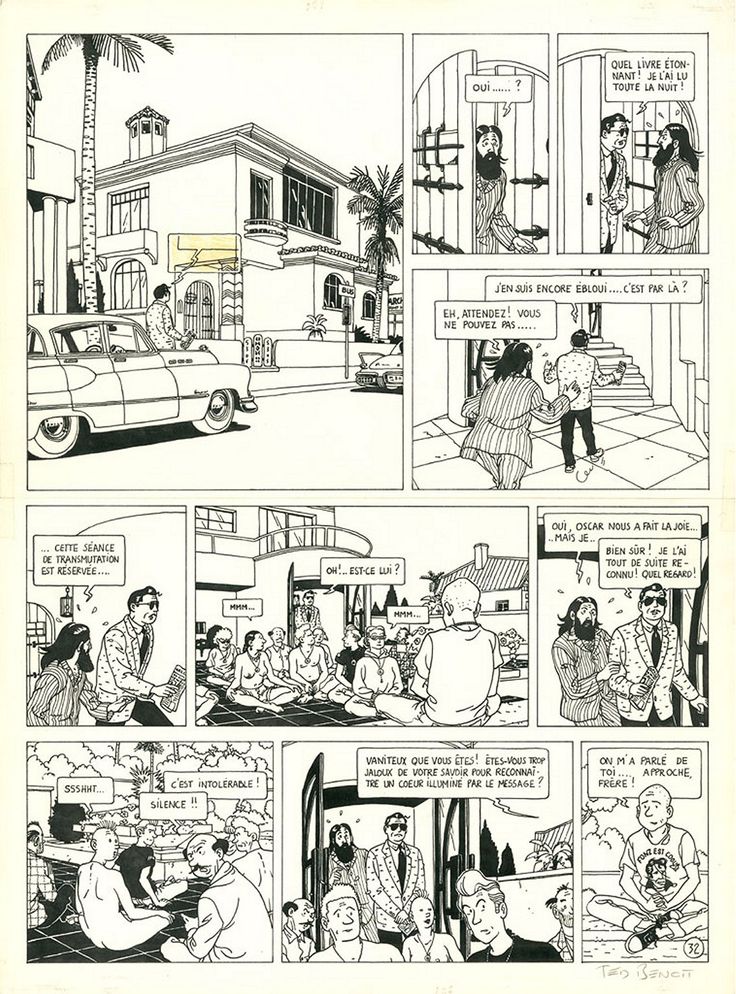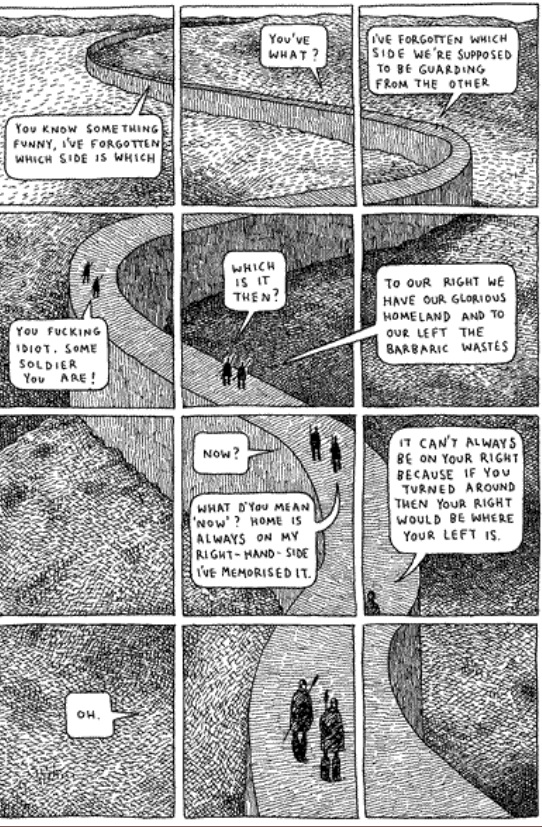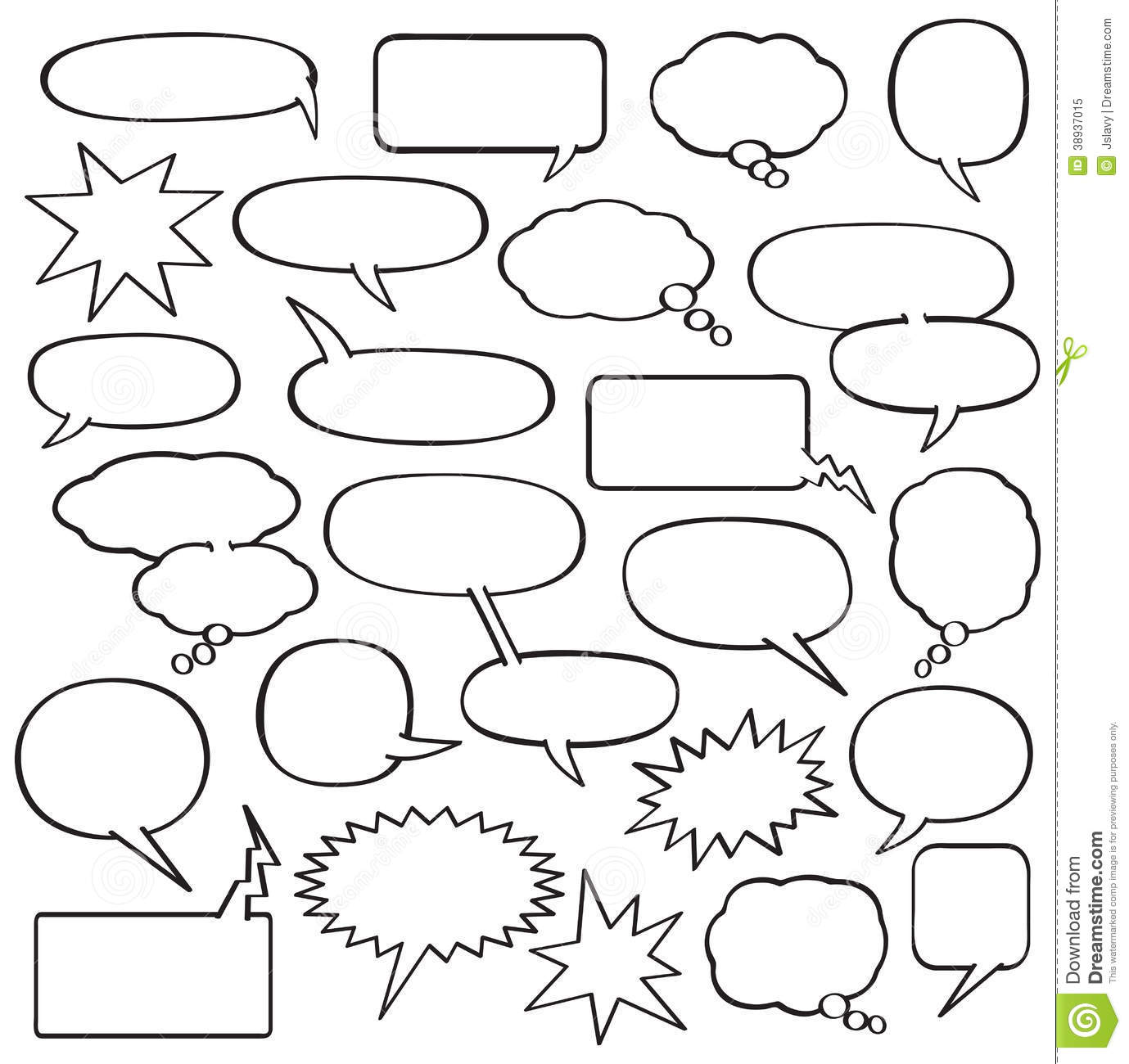Chapter 1: Setting the Record Straight
COMICS – Juxtaposed pictorial and other images in deliberate sequence, intended to convey information and/or to produce and aesthetic response in the viewer.
- Sequential art
- Art of the invisible
- Is Art
- Sight based medium
- Balancing, subtractive and additive, step of time and space
- Endless possibilities
Chapter 2: The Vocabulary of Comics
ICON – any image used to represent a person, place, thing or idea. Categories of icons are symbols, language science and communication, pictures, non pictoral and abstract
CLEAR LINE STYLE – Iconic characters with unusually realistic backgrounds. One set of lines to see, another set of lines to be. Eg. Tintin
Ray Banana, Berceuse électrique (pl 32) – 1982 – Ted Benoit. This style very much reminds me of Tintin’s.
PICTORIAL VOCABULARY – For comics or any of the visual arts, it is the area described by 3 vertices (reality, language and the picture plane).
VISUAL ICONOGRAPHY – the vocabulary of comics
UNIVERSE OF COMICS – incorporate language and other icons into a chart, building a comprehensive map.
Chapter 3: Blood in the Gutter
CLOSURE – phenomenon of observing the parts but perceiving the whole. It can take many forms, some simple, some complex. Closure is the agent of change, time and motion. Allows us to connect these moments and mentally construct a continuous, unified reality. It is he grammar of comics.
Below is an example of closure occurring in one setting by Tom Gauld. This is a polyptych which is a moving figure(s) imposed over a continuous background. If there was no panels, it wouldn’t be as effective (I think) to imply time and closure.
THE GUTTER – the space between the panels, playing host to much of the magic and mystery that are the very heart of comics. Human imagination takes two separate images and transforms them into a single idea. Panels fracture both time and space, offering a jagged, staccato rhythm of unconnected moments.
PANEL TO PANEL – Transitions in comics placed in one of several distinct categories: Moment to moment, action to action, subject to subject, scene to scene, aspect to aspect and non-sequitor.
Chapter 4: Time Frames
COMIC PANEL or FRAME – general indicator that time or space is being divided.
BLEEDS – panel runs of edge of page
MOTION LINE/ZIP RIBBONS – representing the paths of moving objects through space
Garfield Comic – different motion lines or representations of motion in each panel
Chapter 5: Living in Line
SYNASTHETICS – using senses into art (eg. Kandinsky). Seeds of the invisible. From expressionism. WORD BALLOON – to depict sound/speech. Includes verbal and non verbal. Using various styles (type, line) to capture the sound.
So many different examples of speech balloons, I wasn’t able to find an image that depicted many but here is an example. These ones are bound and just black lines but there are so many different examples out there.
Chapter 6: Show and Tell
WORD SPECIFIC – pictures illustrate, but don’t add to a largely complete text
PICTURE SPECIFIC – words do little more than add a soundtrack to a visually told sequence
DUO SPECIFIC – both words and pictures send the same message
ADDITIVE – words amplify or elaborate an image or vice versa
PARALELL- words and pictures seem to follow very different courses without intersecting
MONTAGE – words are treated as integral parts of the picture
INTERDEPENDENT – words and pictures go hand in hand to convey and idea that neither could convey alone. The more that is said with words, the more pictures can be freed to go exploring or vice versa.
Chapter 7: The Six Steps
ART – as author sees, it doesn’t grow out of either of our two basic instincts: survival and reproduction. Pure art is tied to the question of purpose, what you want out of art.
THE PATH steps:
1) IDEA/PURPOSE – the purposes, the work’s content
2) FORM – eg. book, chair
3) IDIOM – the school of art, the vocabulary of styles, gesture or subject matter, the genre
4) STRUCTURE – putting it all together, what to include and leave out, how to arrange and compose
5) CRAFT – construct, apply skills knowledge, invention, problem solving and getting the job done
6) SURFACE – production values, finishing




Leave a Reply